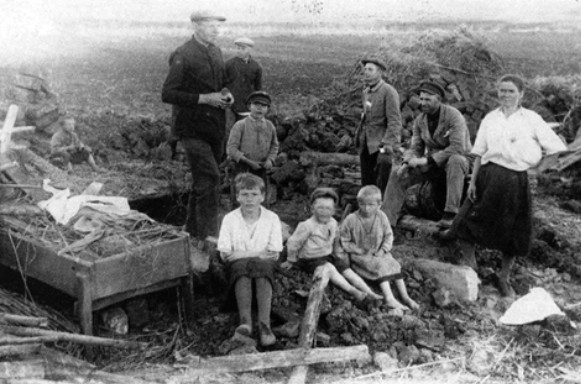Nezamozhnyky
Nezamozhnyky [незаможники] (poor peasants). A term used in the early years of Soviet rule to describe peasants who did not own livestock or agricultural equipment or who owned relatively small plots of land. Nezamozhnyky constituted one of the three categories introduced by the Soviet authorities in the 1920s to classify the rural population. (The other two were middle peasants [seredniaky] and kulaks, or rich peasants.)
During War Communism Bolshevik rule in the Ukrainian countryside was based not on the soviets but on groups of nezamozhnyky organized into Committees of Poor Peasants, which were easier to control than the soviets. With the introduction of the New Economic Policy, the administrative powers of the committees were greatly reduced, and in 1925 they were completely removed.
After 1925 the term nezamozhnyky was more a political and social category than one indicating the size of property holding. It was usually applied to supporters of the Soviet regime who had comparatively little land, but who were by no means always poor. The budgets of the Committees of Poor Peasants for 1924–5 in Ukraine show that people without land under cultivation had an annual net income of 52 rubles per capita, which was only slightly less than the average for the republic (60.3 rubles); and their per capita purchases even exceeded those of peasants who were cultivating 4–6 desiatins. Nezamozhnyky headed the entire agricultural administration and enjoyed many privileges, including the right to pay dues to their co-operatives in installments, a discount in renting agricultural equipment from the government, and relief from paying taxes.
The role of the nezamozhnyky grew sharply with the beginning of collectivization. Meetings of nezamozhnyky carried out individual tax assessments and occasionally confirmed the list of kulaks to be dispossessed. Of course, only a minority became village activists. Any nezamozhnyk who refused to support Communist Party policy was immediately reclassified as a ‘kulak henchman.’ With the completion of collectivization the concept of nezamozhnyk disappeared. Although millions of nezamozhnyky starved to death in the Famine-Genocide of 1932–3, they did not fall into the category of the population to which the government rendered economic and social aid.
Alexander Babyonyshev
[This article originally appeared in the Encyclopedia of Ukraine, vol. 3 (1993).]

